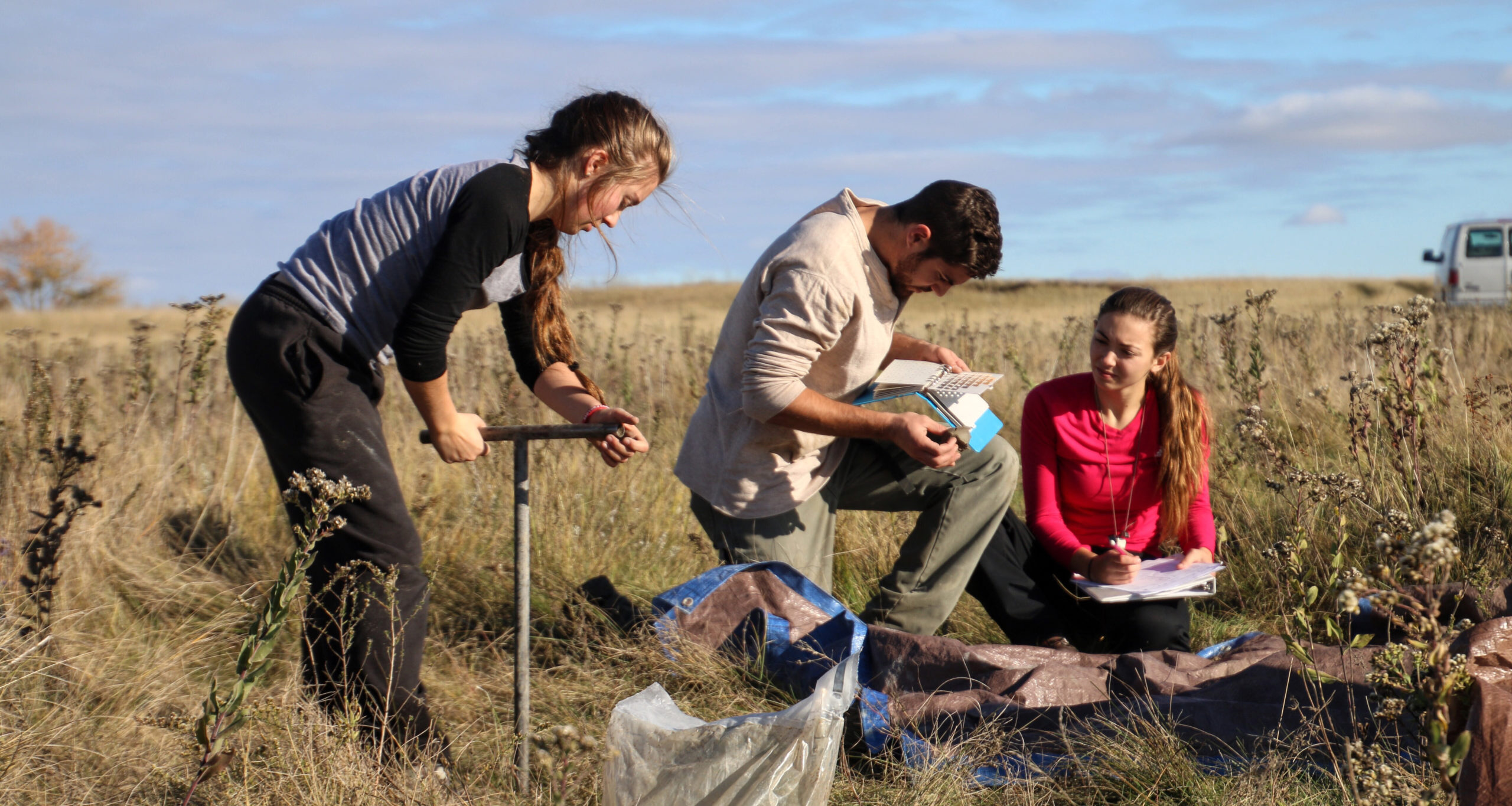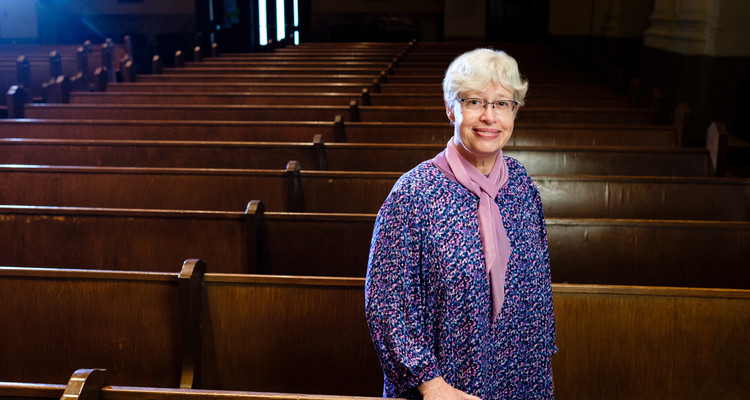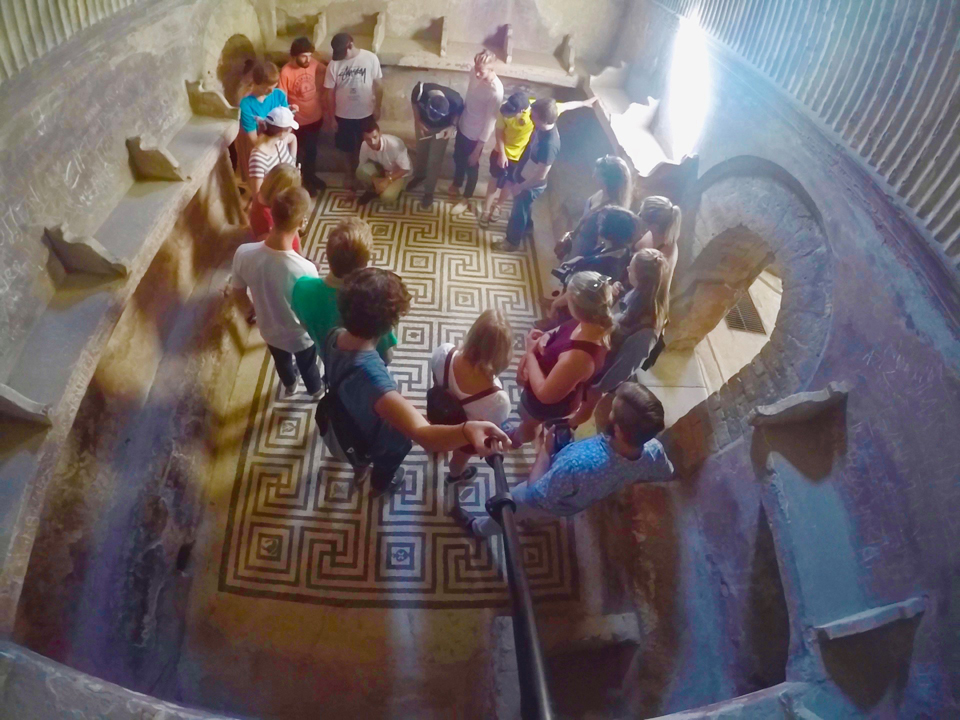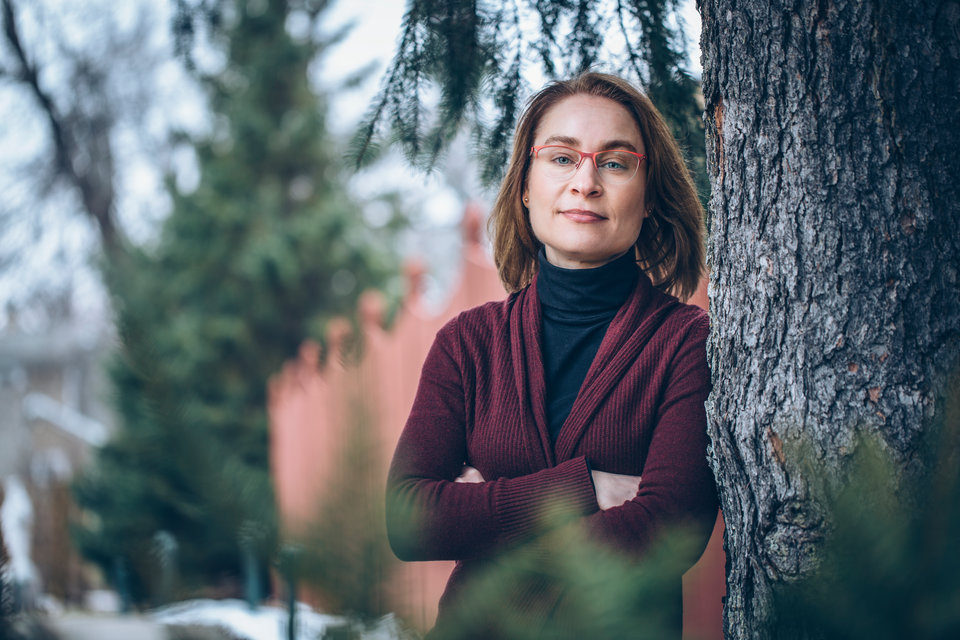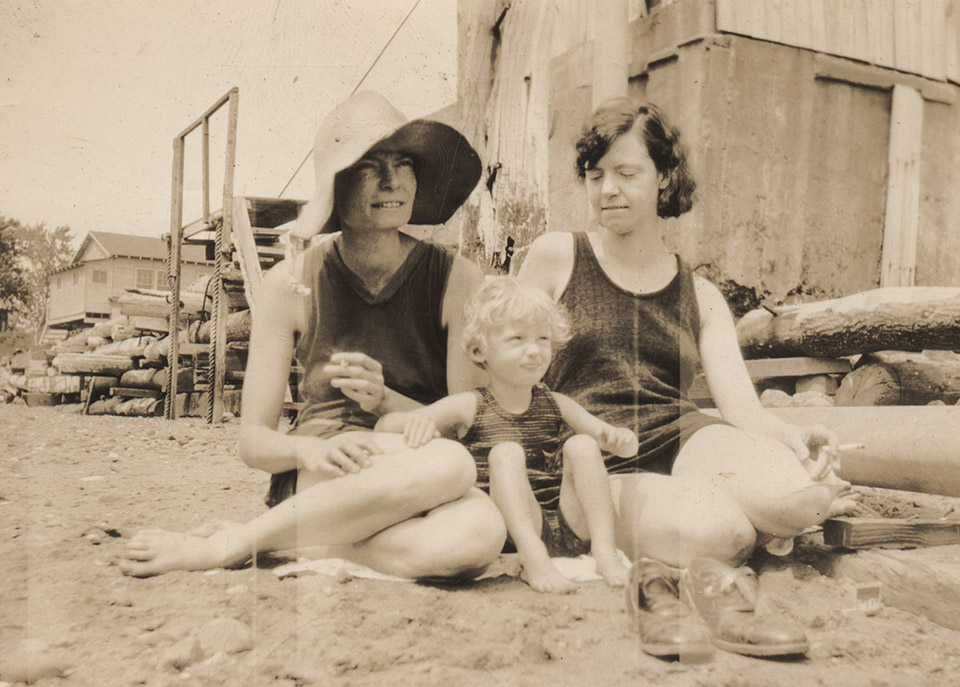Through field research and high-level data analysis, 10 freshmen and two CAS professors will attempt to get to the bottom of the plover’s shrinking habitat as part of the Sustainability Learning-Living Community program, now in its second year.
A small, chubby bird, the color of sand, runs along a gravel shoreline and then stops. All the while, he watches intently for an insect to make a move. The bird, a piping plover, sports a unibrow and wears a waistcoat of white adorned with a black kerchief. Soon, it will be time for him to take over for his mate on a nest of pebbles protecting four marble-sized eggs.
The piping plover has brought St. Thomas faculty and staff to the John E. Williams Preserve in the middle of North Dakota. The shallow salty lake beds there are the piping plover’s favorite nesting site, but its habitat is changing, causing fewer pairs to nest there. The wind-blown salts along the shoreline should inhibit the growth of vegetation, but over the last 20 years almost half of the available nesting habitat has been taken over by grass. That’s part of the reason why the piping plovers are listed as a threatened or endangered species in North America.
In October, we took the latest group of St. Thomas students – 10 freshmen from the Sustainability Living Learning Community (SLLC) – to observe the piping plovers’ nesting ground and collect data. Living Learning Communities are in their second year at St. Thomas, and are intended to bring first-year students together around a common theme, such as sustainability. They share classes and activities with increased opportunities to connect with each other, faculty and the St. Thomas community.
The SLLC students will spend the rest of their fall semester analyzing the data to better understand the interplay of water chemistry, lake levels, climate variations, soil composition, landscape features and vegetation.
THE NATURE CONSERVANCY AND PIPING PLOVERS
Faculty in both the environmental studies and environmental science programs have a long history of creating experiential, hands-on learning opportunities in collaboration with community partners.
Last year, environmental science majors began the project with The Nature Conservancy (TNC) at the John E. Williams Nature Preserve because it is an ideal place to learn key concepts and skills required to enact sustainable practices here or in any landscape.
For us, partnering with TNC was a natural fit. The conservancy is a science-driven organization committed to preserving the lands and waters that support all species, including people. In Minnesota, TNC has helped protect more than 650,000 acres of prairies, forests, lakes, rivers, streams and wetlands. The conservancy also has a long record of collaborating with scientists, governments, communities and businesses to restore not only their own properties but those of the surrounding landowners.
The goal of this particular preserve is to protect and maintain a unique habitat for wildlife in North Dakota. The preserve contains several alkaline lakes surrounded by native prairie and is home to many bird species, including the piping plover. The plover, which nests on the gravel shores, is facing habitat loss due to vegetation encroachment.
Our overall goal is to help TNC figure out why the habitat is shrinking and how to improve their management practices to maintain habitat. We believe the habitat loss is somehow due to changing lake chemistry, lake processes and the interaction of climate and groundwater with the soil, but the question is how? Last year’s students noticed that the different lakes in the preserve are responding differently and losing habitat in different patterns; they asked, “Why?”
PREPARING SLLC STUDENTS
The project seemed like a natural one to bring the SLLC students into. The multidisciplinary nature of SLLC courses prepares students to conduct research and effectively engage with community partners on projects that promote both environmental and social well-being. Learning to collaborate with each other and community partners prepares students to consider how their education can shape their communities and their future career paths.
In the classroom, the SLLC is organized around four complementary courses that explore the interaction between natural processes and human actions from a wide range of perspectives. During their first semester, students in Environmental Geology study the earth processes crucial to understanding, preventing and solving environmental problems. This class is paired with Sustainable Development, which focuses on researching and addressing key environmental challenges.
During their second semester, students will read texts with environmental themes in an English course, Texts in Conversation: Thematic and Intertextual Perspectives. They also will take The Christian Theological Tradition to learn how rethinking and reinterpreting religion can inspire changes in both our worldview and in our relationship with nature.
Students in the SLLC quickly learn that studying landscapes and sustainable development requires moving beyond the classroom. Last year, they pedaled Nice Ride bikes to meet with community partners, paddled canoes to reach geology field sites, visited sites along the Mississippi River to examine soil profiles, took a five-day road trip through North Dakota to study hydraulic fracturing (fracking) and fracturing’s societal impacts, learned about sustainable agriculture in an orchard and practiced research techniques in Theodore Roosevelt National Park in North Dakota. This year’s group is in the midst of a similarly full schedule of activities.
During the fall 2016 semester, SLLC students spent their first month learning field skills and fundamental concepts before traveling to the preserve in early October. In class, they worked with models of groundwater flow and learned how to test the alkalinity of water by acid calibration.
They went outside and practiced analyzing soil profiles with augers and then worked with drone imagery collected by last year’s students to premap vegetation and sediment on shorelines.

Students Shayna Thostenson and Emma Hodapp, and Dr. Paul Lorah launch the Department of Geography and Environmental Studies' conservation drone to map habitat for ground-nesting birds. Photo by Noelle Laske '20.
ON SITE
Once on site, students analyzed the chemistry of the lake water and groundwater, installed short wells to monitor groundwater flow, collected soil samples to analyze in St. Thomas labs, collected new drone imagery and “ground truthed” their premaps to create accurate maps of the different vegetation communities and the sediment distribution and composition along the lakeshores. They prepared samples for chemical analysis at a nearby national chemistry lab. They also analyzed drone imagery by using ArcGIS tools to examine different aspects of the geomorphology.
As the semester progresses, the project becomes more student directed and less faculty directed as they analyze data, make connections and decide how to proceed. During the spring semester, some students may choose to continue this work as independent research with us. We plan to take some students to national conferences to present this work.
Students who started the project last year continue to work side by side with and serve as role models for the SLLC freshmen. This project provides invaluable lessons to all of the students: It requires them to think about the entire system and the interconnectedness of the biological, geological, hydrological, chemical and climatological process: perfect for interdisciplinary environmental science work! It requires collecting, organizing and analyzing data sets. Students learn methods to collect the data and then how to organize and analyze it using Excel, ArcGIS and other tools used by geologists, geographers and environmental scientists.
Finally, they will have to present their results in a clear, professional manner to TNC. By working with an outside community partner, students benefit by working with professionals in their field of interest on a real-life project. They will be introduced to a range of issues on which the TNC works and how it works with many private, nonprofit and government partners.
EVIDENCE OF SUCCESS
Although SLLC is only in its second year, we’ve seen promising markers of success. After fall 2015, more than 75 percent of the SLLC students took additional classes related to environmental studies and environmental science that went beyond the four SLLC courses, including a January-Term Field Geology class held in Nevada and California, Conservation Geography, Conservation Biology, Introduction to GIS, Geomorphology, Psychology of Sustainability and The Geography of Global Health. Many jumped into these 200- and 300-level courses their freshman spring and excelled.
Three LLC students already have collaborated on two separate research projects that have resulted in presentations at an academic conference. Two students started independent research last summer with Dr. Jeni McDermott on a geomorphology project in Norway and will travel there in summer 2017.
By exploring their passions and career interests in two classes together during their freshman fall semester, these students hit the ground running academically and will be better prepared for their chosen careers. ■
